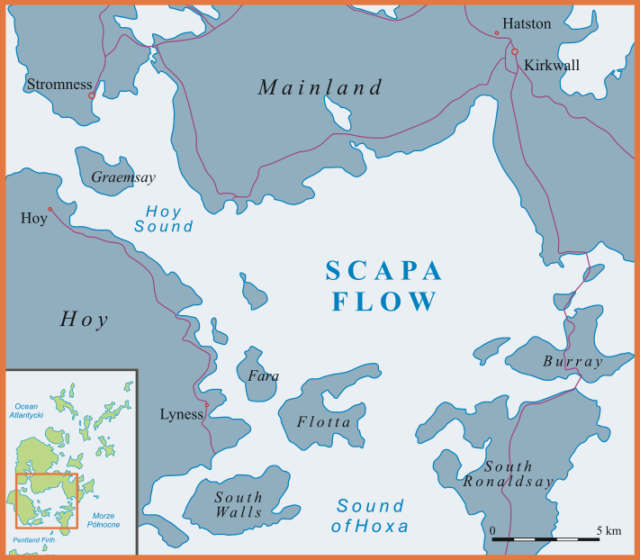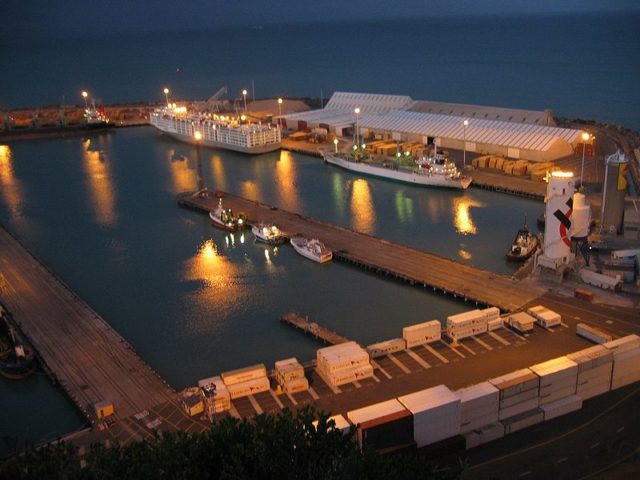The waters that surround Scotland are littered with ships which offer a glimpse into the country’s past.
The history of Scotland is often measured by crumbling castles and long battles, yet several of the country’s most significant and revealing artifacts are lying on the seabed at the bottom of the ocean.
There are about 1800 shipwrecks along Scotland’s coasts, giving us valuable insights into maritime history.
A diving and shipwreck expert named Rod MacDonald has been exploring sunken ships around the world for over 30 years.
He has explored the iconic German fleet at Scapa Flow, to the lesser known tales of ships that had met their end in the depths of the ocean. His knowledge tells us interesting bits of the history of Scotland hidden beneath the waves.
Scapa Flow

One of the world’s most noted wreck sites is the Scapa Flow. One of the most controversial sites of the First World War, it had been used as a northern base for the British Grand fleet.
The German fleet had been handed over to the Allies as one of the conditions of the Armistice at the end of Western Front fighting in November of 1918.
The 74-strong fleet sailed into the Scapa Flow and had been held there for 18 months while German surrender terms were agreed upon.
They had known they would be forced to accept; the commander of the vessel, Rear Admiral Ludwig von Reuter, had ordered the boats to be purposely sunk so they would not have to fall into the hands of the foe.
Of the sunken German ships, several were broken up, only seven are remaining underwater. They are some of the last places to see weapons that were used in the war’s most iconic battle.
There were three battleships in the German fleet – 575 feet long and 100 feet wide. According to MacDonald, you are actually able to see in them the last surviving large gun that had been fired in the Battle of Jutland.
Just about 13 miles long and around a mile or two across, the small sea of Mull has taken several ships to its seabed. The four major wrecks were the Rondo, the SS Thess, Shuna, and the Hispania.
The narrow pass was normally used as ships sought to find relief from the storms that plagued the west coast. Ships would travel up and down the narrow pass for a sheltered shortcut.
There were a lot of nasty rocks that would rise up and the people in the ships never saw them coming.
One of the vessels was the SS Hispania, and her story is one of the traditional maritime bravery, or perhaps even stupidity.
This is most likely one of the best shipwrecks outside of the Scapa Flow.
The ship was wrecked in the year of 1953 after the crew decided to pass up the Sound of Mull for shelter.
They were off track and had run into a big rock. When they struck the rock, it caused a hole in the hull.
The crew was able to get off, but the captain stayed on the sinking ship.
Firth of Clyde

The Firth of Clyde is another draw for anyone who would want to examine underwater wrecks closely.
There are a number of sites charted in the Clyde, including one with some valuable cargo.
In September of 1895, the Wallachia had left Queen’s Dock in Glasgow and set out for the West Indies.
The ship’s bounty was described at the time as “to ease the rigors of life in the West Indies”. It was said by MacDonald that basically, she was holding booze. He has stated as well that if you go into the holds, you will find the hatches are 25 feet across and 25 feet deep.
They are packed to the top with bottles of booze that are stacked loosely and he has seen divers take them up and the corks end up popping off with the change in pressure.
When they come out it still states “McEwans Edinburgh” on the bottle. It smells just like the McEwans Export that you can get in pubs currently, but of course, you would not drink it.
Port of Napier

There is an interesting and unusual story behind the wreck that involves Port Napier.
It met its end just a few hundred meters from a bay that was located on the Isle of Skye – the ship had been brand new and was built for the meat trade in New Zealand.
Yet, control of it was taken over in World War II, and it was refitted as a mine layer.
MacDonald says that the ship was filled with 550 mines at Kyle of Lochalsh when a fire broke out. The crew had attempted to stop the fire, but it got out of control, and they were terrified about the effect of the 550 mines going off and flattening the ship.
They made the decision to tow the ship towards Skye. Yet the fire had gotten worse, and they ended up abandoning the ship in a small bay. Some of the mines went off, and bits of the ship landed 300 meters up the hills of Skype.
The ship after that just rolled over and sank in the shallow water. Currently, she lies on a starboard beam.
The Bella
The fable of the Bella, which was a relatively small and unimportant ship.
Yet the 100-year-old story is remarkable, STV News reported.
On September 25, 1916, the fishing boat the Bella had a crew of six men as it set sail for the fishing ground around Catterline Bay. They had gotten a better-than-anticipated catch when they arrived.
MacDonald stated that a U-boat had surfaced right beside it and took the crew as their prisoners. They quickly searched the fishing boat, and then took the crew back as prisoners of war. They spent the rest of the war imprisoned in Germany. The six men were returned safely at the end of the war.
Here is another story on shipwrecks, from us: Shipwreck from WW2 Near London could Explode
The Bella is not an important wreck, but it is significant to the people of Gourden.
